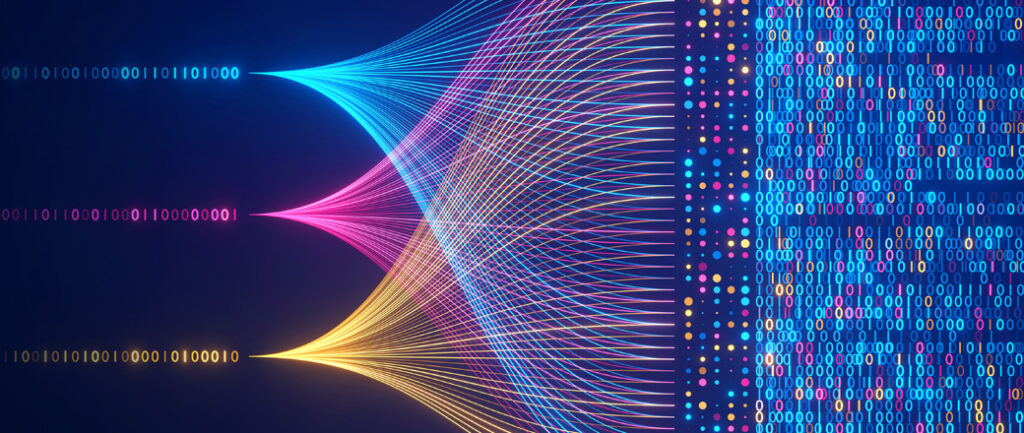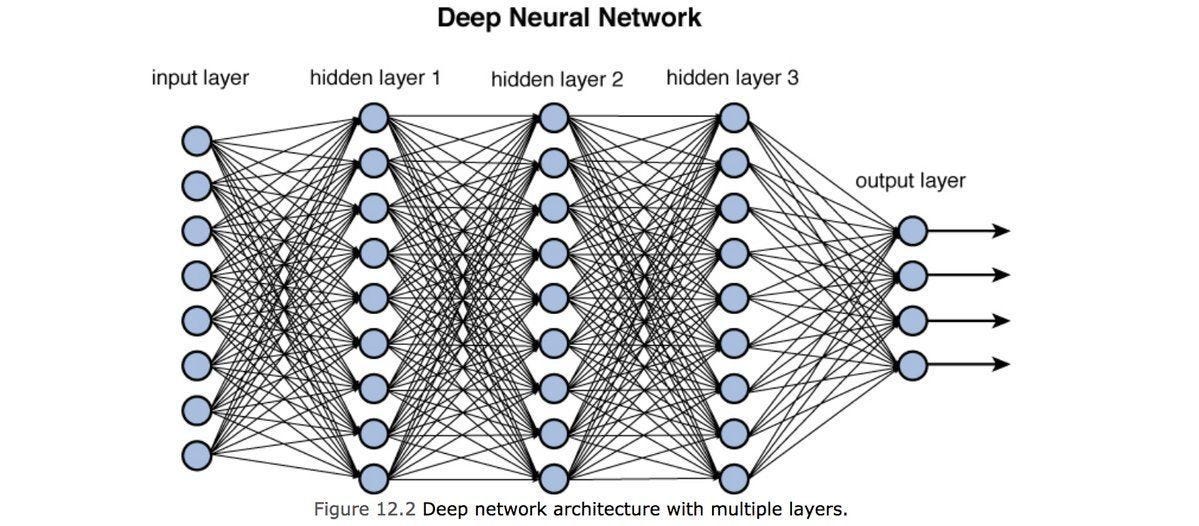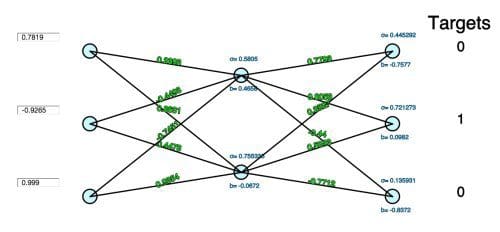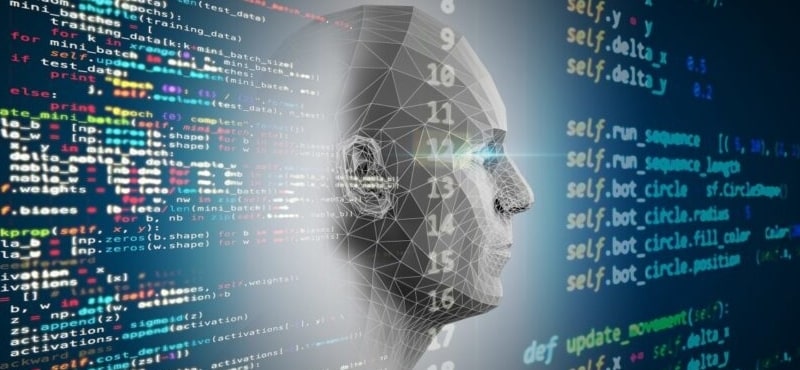Your cart is currently empty!
How AI Works Without the Crazy Jargon
Back to: MAIS AI Essentials
Understanding the Basics of AI Systems
Artificial Intelligence (AI) systems are designed to simulate human intelligence by processing information, identifying patterns, and performing tasks. While they can handle complex operations, the foundational principles behind AI are straightforward.
How AI Systems Work
AI systems function through a combination of data processing and algorithms. At their core, they follow these steps:
- Input: Data is fed into the system, such as images, text, or numbers.
- Processing: Algorithms analyze this data to identify patterns or relationships.
- Output: The system produces a result, such as a prediction, classification, or recommendation.
Unlike traditional programming, where tasks are predefined by human instructions, AI systems learn and adapt by analyzing data. This adaptability allows AI to handle dynamic and unpredictable scenarios.
Example: Comparing AI to Traditional Software
Imagine a spam filter in your email:
- Traditional Software: Uses predefined rules to identify spam, such as detecting specific keywords like “free” or “win.”
- AI-Powered Software: Learns from data, analyzing thousands of examples of spam and non-spam emails to identify subtle patterns that distinguish the two.
By continuously improving based on new data, AI systems outperform traditional software in handling complex tasks.
Why This Matters
Understanding these basics helps demystify AI. At its core, AI isn’t magic—it’s a system of processes designed to mimic human problem-solving and decision-making in a structured way. With this foundation, we can explore the role of data and learning in the next section.
The Role of Data and Machine Learning in AI

At the heart of every Artificial Intelligence system lies data—the raw material that powers its ability to learn, adapt, and make decisions. Without data, AI would be unable to function. Machine learning, a subset of AI, uses this data to identify patterns, generate insights, and improve performance over time.
Why Data is the Backbone of AI
AI systems thrive on vast amounts of information. Data is collected from various sources, such as:
- Online interactions, like search queries and social media activity.
- Sensors in devices, like cameras or fitness trackers.
- Business operations, including customer purchases and inventory records.
This data is then processed and structured into formats the AI system can analyze. For example, a weather prediction model might use years of temperature, humidity, and wind speed data to forecast future conditions.
How Machine Learning Works
Machine learning (ML) is the process that allows AI systems to improve through experience, rather than relying on predefined instructions. ML works by feeding data into algorithms that “learn” patterns and make predictions or decisions.
There are three main approaches to machine learning:

- Supervised Learning: The algorithm is trained on labeled data, meaning the desired output is already known. For instance, training an AI to recognize cats involves showing it thousands of images labeled as “cat” or “not cat.”
- Reinforcement Learning: The AI learns through trial and error by interacting with an environment. It receives rewards for successful actions and penalties for mistakes, refining its behavior over time.
An Everyday Example of Machine Learning
Consider how a music streaming service like Spotify recommends songs:
- Data Collection: It gathers data on your listening habits—your favorite genres, artists, and how often you replay tracks.
- Pattern Recognition: Using machine learning algorithms, it identifies patterns in your preferences.
- Recommendation: Based on these patterns, it suggests songs or playlists tailored to your tastes.
Why Machine Learning Matters
Machine learning transforms raw data into actionable insights, making AI systems versatile and effective. By learning from data, AI can adapt to new information and improve over time, becoming more accurate and useful in a variety of applications.
In the next section, we’ll dive deeper into neural networks, the structures that enable many machine learning models to function.
Neural Networks

Neural networks are the foundation of many of the most advanced Artificial Intelligence systems, powering everything from facial recognition to natural language processing. These systems are inspired by the human brain, with interconnected “neurons” working together to process information, learn patterns, and generate predictions. Despite their complexity, the basic principles of neural networks can be understood in simple terms.
What Are Neural Networks?
A neural network is a computational model made up of layers of interconnected nodes, or “neurons,” each performing a specific role. While neural networks take inspiration from biological brains, they function mathematically, analyzing data to identify patterns and relationships.
The process can be broken down into three stages:
- Receiving Input: Data is introduced into the network, such as an image, text, or audio.
- Processing Data: This input is passed through layers of neurons, each applying calculations and transformations to extract meaningful features.
- Producing Output: The network generates a result, such as identifying the subject of an image or predicting the next word in a sentence.
For example, in an email spam filter, the neural network takes email content as input, analyzes patterns (e.g., words, phrases, and sender information), and outputs a decision: spam or not spam.
Structure of a Neural Network

Neural networks consist of three main types of layers, each playing a unique role in the system:
- Input Layer: This is where the raw data enters the network. In a handwriting recognition task, for instance, the input layer might represent pixel values from an image.
- Hidden Layers: These layers perform the computational heavy lifting, extracting features and identifying patterns in the data. Each neuron in these layers applies mathematical operations, combining inputs with weights and biases to refine the data. The more hidden layers a network has, the “deeper” it becomes, which is why modern, complex networks are often referred to as deep learning models.
- Output Layer: This final layer produces the result, such as a label (“cat” or “dog”) or a numerical prediction. For example, in a sentiment analysis task, the output layer might classify text as positive, neutral, or negative.
How Neural Networks Learn

Neural networks “learn” by adjusting their internal parameters during a process called training. Training involves feeding the network large datasets and comparing its outputs to known correct answers, or ground truth.
Here’s how the learning process works:
- Forward Propagation: Data moves through the network, layer by layer, to generate an output.
- Loss Calculation: The network compares its output to the correct answer, calculating the difference (or “loss”).
- Backpropagation: The network adjusts its weights and biases to reduce the loss, essentially “learning” from its mistakes.
- Iteration: This process repeats over many cycles (or epochs), gradually improving the network’s accuracy.
For example, training a neural network to recognize cats might involve showing it thousands of labeled images of cats and non-cats. Over time, the network learns to identify features like whiskers, fur patterns, and ear shapes that distinguish cats from other objects.
Real-World Applications of Neural Networks
Neural networks power some of the most impactful AI systems in use today, across a wide range of fields.
Image Recognition is used in applications like facial recognition, medical imaging for disease detection, and autonomous vehicles that identify obstacles on the road.
Natural Language Processing (NLP) enables systems like ChatGPT, Google Translate, and virtual assistants to understand and generate human language. These networks analyze context, syntax, and semantics to produce coherent text responses or translations.
Generative AI models like GPT and DALL-E use neural networks to create human-like text, art, and designs. These systems learn from massive datasets to generate entirely new content, from stories to images.
Healthcare benefits from neural networks that assist in analyzing medical scans, predicting patient outcomes, and identifying drug candidates in pharmaceutical research.
Gaming applications like AlphaGo use neural networks to master complex strategy games, often outperforming human champions by identifying patterns and optimizing strategies.
Why Neural Networks Are Transformative
Neural networks revolutionized AI by making it possible to handle vast, complex datasets in ways that traditional algorithms could not. Their ability to “learn” and adapt means they excel at solving problems where predefined rules are impractical or impossible.
For example, in customer service, chatbots powered by neural networks can respond naturally to diverse customer queries without explicit instructions for every possible scenario. In agriculture, AI systems analyze satellite images to monitor crop health and optimize resource use.
Challenges and Opportunities
While neural networks are incredibly powerful, they come with challenges.
- Data Dependency: Neural networks require large amounts of high-quality data to perform effectively. Poor or biased data can lead to inaccurate or unfair results.
- Complexity: Neural networks often operate as “black boxes,” making it difficult to interpret how they make decisions.
- Resource Intensity: Training deep networks requires significant computational power, which can be costly and energy-intensive.
Despite these challenges, the potential of neural networks continues to expand as computational power increases and new techniques emerge.
Neural networks are the engines driving much of modern AI, enabling groundbreaking innovations across industries. With their ability to process data, learn patterns, and make predictions, they remain at the forefront of AI’s evolution. In the next section, we’ll explore how algorithms turn these processes into actionable predictions and decisions.
From Algorithms to Predictions
At the core of every Artificial Intelligence system lies the ability to make decisions or predictions based on data. This process is driven by algorithms—step-by-step instructions that allow AI systems to analyze information and generate meaningful outputs. Understanding how algorithms work helps demystify how AI systems function, from recommending products to diagnosing diseases.
What Are Algorithms in AI?

An algorithm in AI is a set of mathematical instructions designed to process data and solve specific problems. Unlike traditional algorithms, which follow predefined rules, AI algorithms learn and adapt based on the data they analyze.
For example, a traditional algorithm in a navigation app calculates the shortest route between two points using fixed rules. In contrast, an AI-powered navigation system uses historical traffic patterns and real-time updates to predict the fastest route dynamically.
How AI Turns Data into Predictions
AI systems use algorithms to transform raw data into actionable predictions. The process can be broken into the following steps:
- Data Input: Raw data, such as images, text, or numbers, is fed into the AI system.
- Pattern Analysis: The algorithm identifies trends, correlations, or features in the data. For example, in a weather prediction model, it might analyze past temperature and humidity levels.
- Prediction or Decision: Based on the patterns it finds, the system generates a prediction (e.g., tomorrow’s weather) or decision (e.g., recommend an umbrella).
These steps are repeated and refined as more data is processed, enabling the system to improve its accuracy over time.
Types of AI Algorithms
AI systems rely on different types of algorithms depending on the task:
Classification Algorithms: These are used when the goal is to assign data to specific categories. For instance, a spam filter classifies emails as either “spam” or “not spam.”
Regression Algorithms: These predict continuous values, such as stock prices or housing market trends.
Clustering Algorithms: Often used in unsupervised learning, these group data into clusters based on similarities. For example, an e-commerce site might use clustering to segment customers by purchasing behavior.
Recommendation Algorithms: These suggest items or content based on user preferences. For instance, Netflix uses these to recommend shows tailored to your interests.
Real-World Example: How a Recommendation System Works
Let’s consider how a streaming service, like Netflix or Spotify, uses algorithms to suggest content:
- Data Collection: The system collects data on your preferences, such as movies you’ve watched or songs you’ve liked.
- Feature Extraction: The algorithm identifies key features, such as genre, actors, or tempo, that are common in your choices.
- Pattern Matching: It compares your preferences to the behavior of other users with similar tastes.
- Prediction: The system predicts what you’re likely to enjoy next and displays those recommendations.
This same process can be applied in a wide range of fields, from personalized advertising to fraud detection.
The Importance of Feedback in Improving Predictions
AI algorithms continuously improve through feedback mechanisms. When you rate a product, click on a recommended video, or correct a prediction, the system uses this information to refine its future outputs. This iterative process is what makes AI systems increasingly accurate and effective over time.
Why It Matters
By understanding how AI algorithms work, it becomes clear that these systems are not mysterious or magical—they are tools designed to analyze data, identify patterns, and make informed decisions. Whether it’s recommending a song, diagnosing a disease, or optimizing a supply chain, algorithms are the driving force behind AI’s ability to transform industries and improve daily life.
In the next section, we’ll bring these concepts together with an interactive example that demonstrates AI in action.
Interactive Example: AI in Action
To truly understand how Artificial Intelligence works, it’s helpful to see it in action. Let’s walk through a simple yet powerful example that demonstrates how AI systems process data and deliver results: a virtual assistant responding to a user’s question.
How a Virtual Assistant Works
Imagine you ask a virtual assistant like Siri or Alexa, “What’s the weather like today?” Behind the scenes, the AI goes through several steps to provide you with an accurate and relevant answer.
Step 1: Input Processing
The system first processes your voice input. Using speech-to-text algorithms, the assistant converts your spoken words into written text that the AI can analyze. The system uses natural language processing (NLP) to understand the intent behind your question, recognizing key phrases like “weather” and “today.”
Step 2: Data Retrieval
The AI retrieves real-time weather data from its database or a connected API. It uses pattern matching to identify the location associated with your account or device. The system queries weather data for that location, such as temperature, precipitation, and wind speed.
Step 3: Decision-Making
Once the data is retrieved, the AI decides how to respond. It identifies the most relevant information (e.g., “The temperature is 72°F with a chance of rain”) and organizes it into a concise answer. The response is crafted in a natural, conversational tone using text generation algorithms.
Step 4: Output Delivery
The assistant delivers the response to you, either as text on your screen or spoken aloud using text-to-speech technology. For example: “Today’s temperature is 72°F, with light rain expected in the afternoon.”
Copyright 2024 Mascatello Arts, LLC All Rights Reserved
